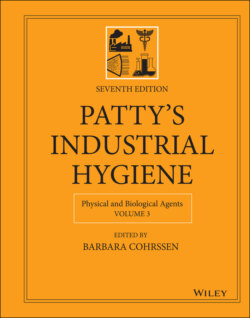Читать книгу Patty's Industrial Hygiene, Physical and Biological Agents - Группа авторов - Страница 61
12.1 Choosing a Health Physics Instrument
ОглавлениеThe choice of a health physics surveying instrument for a specific application depends on a number of factors. Some general requirements are the same as those for other industrial hygiene surveying instruments, such as portability, mechanical ruggedness, and reliability. They also should
be calibrated for the radiation that they are designed to measure;
be sufficiently sensitive and appropriate for the radiation levels to be detected and measured;
be responsive to the radiation being measured. This important point can best be clarified with a practical example. A commonly used beta–gamma probe has a 30‐mg cm−2 wall. This probe would be worse than useless if one wished to survey for a low beta energy contaminant, such as 14C or 35S, or for an alpha‐emitting contaminant such as 210Po. The range of the radiation from each of these radioisotopes is less than the probe's wall thickness, and therefore would not be detected. If there were to be severe contamination of this type, then the probe would falsely indicate safe conditions;
be used to make measurements in a manner appropriate to the instrument's response time. A short time constant signifies that the instrument has a short response time. This means that the instrument responds to rapid changes in radiation level, such as would be experienced when passing the probe over a small area of contamination or over a crack in a radiation shield. A fast response time, however, means a decrease in sensitivity. Furthermore, a fast response time may result in rapid fluctuations in the meter reading, thus making it difficult to obtain an average reading. Many instruments offer a range of response times, the appropriate one being selected by the surveyor.
